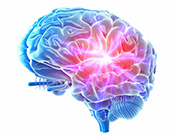|

|
|
The views expressed on this page are soley
those of the author and do not
necessarily represent the views of County
News Online
|
 |
Prevention Action Alliance
Know! Alert - Weed Awareness
The U.S. Surgeon General has issued an advisory regarding marijuana use
and the developing adolescent brain. He states that the increases in
access to this drug, in multiple and highly potent forms, along with a
false and dangerous perception of safety among youth, merits a
nationwide call to action.
Weed – as most young people call it – is a highly used drug among
adolescents in the U.S., second only to alcohol. Nearly 14% of eighth
graders, 33% of tenth graders, and 44% of twelfth graders report having
used marijuana at some point in their youth.
It is not the drug it used to be either. Marijuana today is much
stronger than in the past, whether smoked, vaped, drunk or eaten. The
average amount of THC (the component that causes euphoria and
intoxication) in marijuana increased from 4% in 1995 to 12% in 2014. In
some states where dispensaries have popped up, marijuana is now
available with average concentrated THC levels between 18-23 percent.
Even more extreme, marijuana “dabs” and “waxes,” which are highly
concentrated marijuana products, reach THC levels as high as nearly 76
percent.
The choices for consumption go far beyond the “pot” brownies of the
past as well. There are marijuana-infused teas, coffees, gummies,
suckers, chocolates, mints, caramels, and assorted cookies - to name a
few. Highly intoxicating edibles have become increasingly popular and
are finding their way into the hands and mouths of adolescents and
young children (both unintentionally and intentionally). And because
edible marijuana takes time to absorb and produce its effects, the risk
of overdose increases – even when use is intentional.
As shared in the Surgeon General’s advisory, marijuana “acts by binding
to cannabinoid receptors in the brain which produce a variety of
effects, including euphoria, intoxication, and memory and motor
impairments. These same cannabinoid receptors are also critical for
brain development. They are part of the endocannabinoid system, which
impacts the formation of brain circuits important for decision making,
mood and responding to stress.”
The brain continues to develop into a person’s mid-twenties, and during
that time is especially vulnerable to the effects of addictive
substances. The earlier the onset of use and the higher the
concentration of THC, the greater the risks of physical dependence,
addiction, and other negative consequences.
Further research is needed to understand the full impact of THC on the
developing adolescent brain. However, current studies show that regular
marijuana use during adolescence is associated with:
Changes in the brain that involve attention, memory, decision-making and motivation
Impaired movement, timing and coordination
Anxiety, agitation, paranoia, and psychosis
Increased risk for and early onset of psychotic disorders, such as schizophrenia
Greater likelihood of misusing opioids
Impaired learning and decline in IQ
Increased rates of school absence and dropout
Impaired (?) Sschool performance that jeopardizes professional and social achievements
Deterioration of overall life satisfaction and suicide attempts
The Surgeon General’s advisory is intended to, “raise awareness of the
known and potential harms to developing brains. These harms are costly
to individuals and to our society, impacting mental health and
educational achievement and raising the risks of addiction and misuse
of other substances.”
Parents and educators are encouraged to talk to the young people in
their lives to share this pertinent information, allowing them to ask
questions and discuss openly. At a time when marijuana use is becoming
more and more “normalized” in our society, the time to have this
conversation is now.
|
|
|
|

